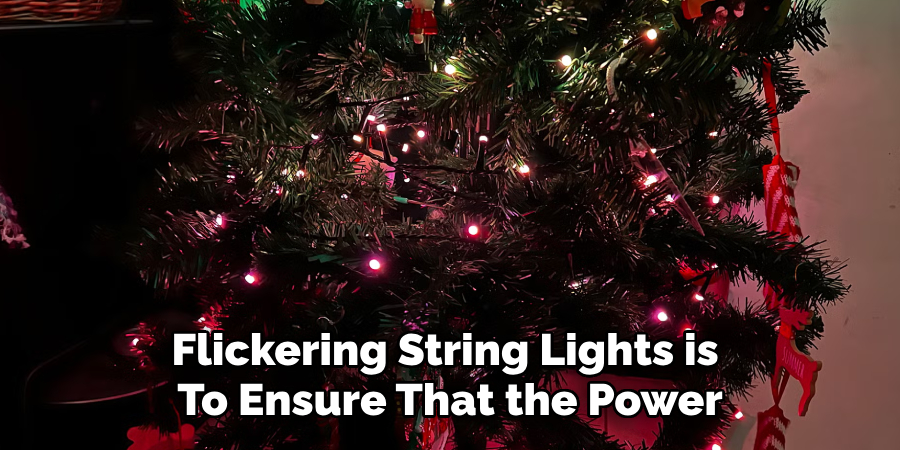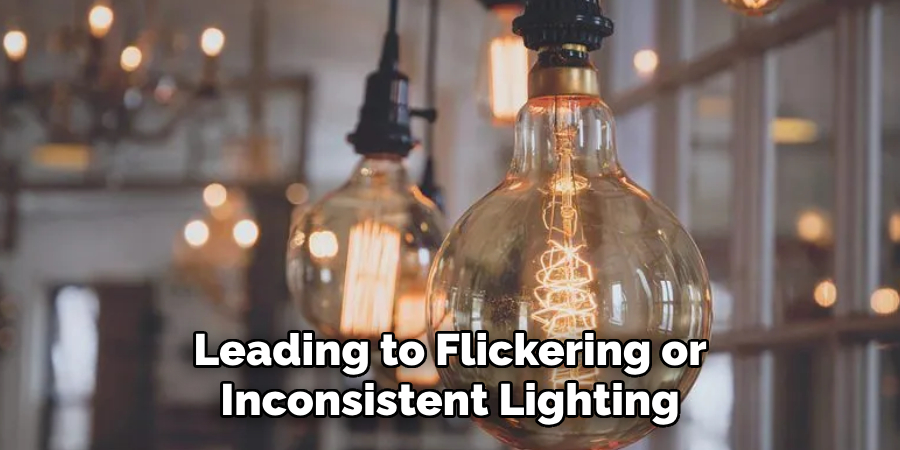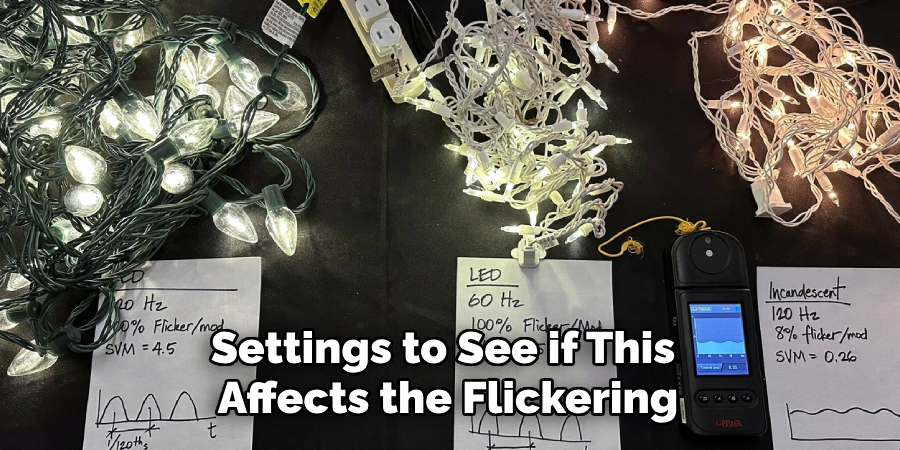String lights can instantly enhance the ambiance of any space, but flickering bulbs can be both distracting and frustrating. Understanding and addressing the root cause of the problem is essential to restore their charm and functionality. This guide will walk you through how to fix flickering string lights quickly and efficiently.

Importance of Fixing Flickering Lights
Flickering string lights not only disrupt the cozy atmosphere they are meant to create but can also indicate underlying electrical issues. Addressing the problem is crucial for ensuring safety, as flickering can sometimes signal faulty wiring or loose connections, which may pose a fire hazard. Additionally, consistent flickering can shorten the lifespan of the bulbs, leading to frequent replacements and unnecessary expenses. By fixing the issue promptly, you can maintain both the aesthetic appeal and functionality of your string lights while promoting a safer environment.
Common Causes of Flickering
Understanding the common causes of flickering in string lights is the first step toward fixing the issue. One frequent cause is loose bulb connections, where a bulb is not securely seated in its socket. This can interrupt the electrical flow and result in inconsistent lighting. Another common issue is faulty or worn-out bulbs, which may no longer function correctly and need replacement. Additionally, damaged or frayed wires can compromise the circuit, leading to flickering or even complete failure of the lights. Power supply problems, such as an overloaded circuit or fluctuating voltage, can also be to blame. Identifying these potential problems will help you pinpoint the root cause and address it effectively.
10 Methods How to Fix Flickering String Lights
1. Check the Power Source
The first step in troubleshooting flickering string lights is to ensure that the power source is functioning properly. Inspect the power outlet to ensure it’s delivering consistent power. Sometimes, a loose connection or faulty outlet can cause the lights to flicker. Try plugging the string lights into a different outlet to see if the flickering persists. If the lights work without flickering in another outlet, the original outlet may be faulty and should be repaired or replaced. Additionally, check if the extension cord you are using (if any) is in good condition and securely plugged into both the outlet and the light strand. A poor connection here could also result in flickering.

2. Inspect the Bulbs
One of the most common causes of flickering string lights is a faulty or damaged bulb. In string lights with incandescent or LED bulbs, a single damaged or loose bulb can cause the entire strand to flicker. Begin by inspecting the bulbs one by one. Look for any visible damage, such as broken glass or discolored filaments, which could indicate a burned-out bulb. If you find a faulty bulb, replace it with a new one of the correct type and wattage. Be sure to turn off the lights and unplug the string lights before replacing any bulbs to avoid electrical shock.
3. Replace the Fuses
Many string lights, especially older models, are equipped with fuses that protect the lights from electrical surges. Over time, fuses can wear out or blow, which could lead to flickering or malfunctioning lights. Check the fuse compartment of your string lights, which is usually located in the plug. Open the compartment, remove the old fuse, and replace it with a new one of the same rating. If the fuse is the culprit, this simple replacement should resolve the flickering issue.
4. Tighten Loose Bulbs
If the string lights continue to flicker after you’ve checked the power source and replaced any damaged bulbs, the issue could be due to loose bulbs. When bulbs are not properly screwed into their sockets, the connection can become unstable, leading to flickering or inconsistent lighting. Carefully check each bulb to ensure it is screwed in tightly. If a bulb is loose but not damaged, simply tightening it may stop the flickering. Be gentle when tightening bulbs to avoid damaging the socket or the bulb itself.

5. Examine the Wiring
Flickering string lights could also be caused by issues with the wiring. Over time, wires can become frayed, disconnected, or damaged, leading to poor electrical flow and flickering lights. Inspect the wiring along the entire length of the string lights for visible signs of wear or damage. Look for any exposed wires, cuts, or crimps that could be causing an electrical short. If you find any damaged wiring, you can attempt to repair it with electrical tape or replace the entire strand if the damage is extensive. For outdoor string lights, ensure the wiring is protected from moisture, as exposure to water can cause shorts and flickering.
6. Check for Loose Connections
In addition to loose bulbs, the overall connection between the string lights and the power source could be to blame for flickering. Make sure that the plug is fully inserted into the outlet, and check for any loose connections between the various strands of lights if you have multiple strands linked together. A loose connection between strands can result in intermittent flickering. If your lights are connected via a plug-and-play connector, ensure that these connectors are securely attached and that no wires are exposed.
7. Test the Dimmer or Timer
Many string lights come with built-in dimmers or timers, which can sometimes cause flickering if they malfunction or are set improperly. If your lights have a dimmer feature, try adjusting the settings to see if this affects the flickering. Likewise, if you have a timer function, check that it is set correctly and that it is not causing the lights to turn off and on intermittently. Sometimes, a malfunctioning timer or dimmer can cause the lights to flicker. If the problem persists even after adjusting these features, it might be necessary to replace the dimmer or timer module.

8. Look for Electrical Interference
Electrical interference from other devices can sometimes cause flickering lights. Appliances that draw significant amounts of power, such as refrigerators, microwaves, or air conditioners, can create electromagnetic interference that disrupts the stable flow of electricity to your string lights. If your lights are placed near such devices, try moving them to a different location. You can also try unplugging other nearby devices one by one to see if any of them are causing the flickering. Reducing or eliminating interference from other electronics could help restore steady lighting to your string lights.
9. Replace the Entire Light Strand
If you have tried all of the previous methods and your string lights are still flickering, it may be time to consider replacing the entire strand. Over time, string lights can become worn out, especially with regular use. If the bulbs, fuses, wiring, and connections all appear to be in good condition but the flickering persists, the lights themselves may simply be too old or damaged to repair. If this is the case, purchasing a new strand of string lights may be the most effective solution. When selecting new lights, consider investing in a higher-quality set or one with a longer lifespan to avoid future flickering issues.
10. Consult a Professional
If none of the above methods resolve the flickering issue, and you are still uncertain about the cause, it might be worth consulting a professional. An electrician or technician can examine the string lights more thoroughly, especially if you suspect the flickering is due to wiring issues or electrical interference in the broader power supply. A professional will have the tools and expertise to diagnose and repair problems that might be too complicated or risky to fix on your own. While this option comes with additional cost, it can save you time and prevent further damage to your lights or home electrical system.

Common Mistakes to Avoid
When troubleshooting flickering string lights, it is important to approach the process carefully and avoid common mistakes that could lead to ineffective repairs or even further damage. Here are some mistakes to watch out for:
- Skipping the Basic Checks
One of the most frequent errors is overlooking basic issues like loose plugs or switches in the “off” position. Always start with a simple inspection of the power source and ensure everything is properly connected before moving on to more complex troubleshooting steps.
- Using the Wrong Replacement Parts
Replacing fuses or bulbs with incorrect types can cause additional problems. Always make sure that replacement components, such as bulbs or fuses, match the original specifications for your string lights. Using mismatched parts can lead to poor performance, further flickering, or damage to the lights.
- Overtightening Bulbs
While it’s important to check that bulbs are securely in their sockets, overtightening can damage the socket threads or the bulbs themselves. Tighten carefully until the bulbs are snug but do not force them beyond their natural limits.
- Ignoring Exposed Wiring
Continuing to use string lights with exposed or frayed wires is a safety hazard. Even if only a small section of wiring appears damaged, it is vital to repair or replace the strand to prevent electrical shorts, fire risks, or electrocution.
Conclusion
Flickering string lights can be caused by a variety of issues, from faulty bulbs and wiring problems to electrical interference and malfunctioning timers. By following the ten methods outlined above, you can troubleshoot and fix the flickering, restoring your lights to their full functionality. Thanks for reading, and we hope this has given you some inspiration on how to fix flickering string lights!
